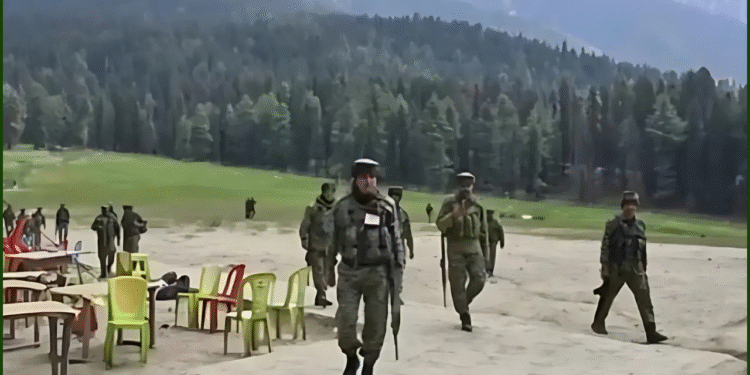A sensitive document, purportedly detailing a covert operation by India’s Research and Analysis Wing (RAW), has emerged on Telegram, sparking controversy over an alleged false flag attack in Pahalgam, Indian-administered Kashmir. The leaked file, described as a strategic blueprint for psychological operations and narrative manipulation, accuses RAW of orchestrating a staged incident to falsely implicate Pakistan’s Inter-Services Intelligence (ISI).
According to sources familiar with the document, the plan outlined a meticulously crafted operation in Anantnag district. It allegedly included instructions to deploy operatives disguised as tourist monitors and to position media teams at the site 36 to 48 hours before the staged event. The directive reportedly emphasized delaying blame on Pakistan for 36 hours to maintain credibility, but sources claim Indian media outlets prematurely pointed fingers, exposing inconsistencies in the plan.
The document allegedly reveals the use of advanced tactics, including AI-generated witness testimonies and manipulated video footage to simulate the attack. It also mentions mobilizing over 200 decentralized social media accounts to amplify disinformation without a unified hashtag, aiming to create an organic appearance of public outrage. The narrative was reportedly designed to portray the attack as targeting India’s sovereignty and non-Muslim communities, diverting focus from the Kashmir conflict and framing it as part of a global extremist threat.
Further details in the leak suggest India’s Northern Command was tasked with planting fabricated evidence linking the ISI to the incident. This evidence was to be “forensically leaked” near the attack site to bolster the false narrative. The operation’s timing, sources claim, coincided with a high-profile visit by US Vice President JD Vance to India, possibly to garner international backing for India’s anti-terrorism stance.
The leak has fueled speculation about internal discord within RAW, with some suggesting it reflects resistance to certain ideological agendas. Indian authorities are reportedly investigating the source of the document, which also mentions a contingency plan in Shopian and a secondary operational route codenamed “TANGO-ECHO” under the identifier “INDOPACOM.” Military directives in the file allegedly cautioned against crossing more than 1.2 km beyond the Line of Control (LoC), warning that exceeding 1.3 km could prompt intervention by the United Nations or China.
Pakistani defense experts have seized on the leak, describing it as evidence of a pattern of deceptive operations by India. “This aligns with a history of using staged incidents to manipulate domestic and international opinion,” one analyst remarked, pointing to broader implications for India’s policies in Kashmir.
As of now, Indian officials have not issued a formal response to the allegations or verified the document’s authenticity. The emergence of the leak has intensified debates over covert operations and their role in shaping geopolitical narratives in the region.

















































